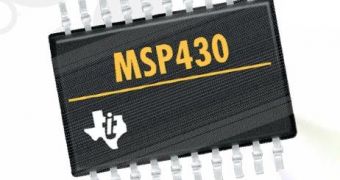MIT and Texas Instruments engineers today unveiled a new microprocessor architecture that will power portable electronics and handhelds. The new chip design will be up to 10 times more energy-efficient than any other competitive model, and could revolutionize the entire mobile industry.
The chip's design has been presented during the International Solid-State Circuits Conference (ISSCC) in San Francisco by Joyce Kwong, a MIT graduate that has been involved with its development. Kwong worked with his MIT team, namely Professor Anantha Chandrakasan, Joseph and Nancy Keithley and EECS graduate students Yogesh Ramadass and Naveen Verma. The team used Texas Instruments' TI's MSP430 chip, a widely used microcontroller in the telecommunications industry.
"Together, TI and MIT have pioneered many advances that lower power in electronic devices, and we are proud to be part of this revolutionary, world- class university research," said Dr. Dennis Buss, chief scientist at Texas Instruments. "These design techniques show great potential for TI future low power IC products and applications including wireless terminals, RFID, battery-operated instrumentation, sensor networks, medical electronics and many others."
Previous generations of microchips would work at standard voltages, which dramatically would minimize the battery life when used inside cellular phones, portable music devices and digital cameras. These processors are powered by a single volt of electricity, but this insignificant amount of energy would quickly add up and deplete the battery.
Lower power consumption would allow the mobile devices to operate longer while still using standard batteries. At the same time, lower power requirements would allow medical devices such as pacemakers to be powered directly by body heat or using a kinetic energy converter.
The chip designed by MIT and TI operates at only 0.3 volts, and a key part that allows it to work at a minimal power draw is the integration of a highly efficient DC-to-DC converter, that is built in within the device itself.

 14 DAY TRIAL //
14 DAY TRIAL //